Audeze MM-500 – Studio Suprema Planar
Audeze MM-500 is the 1699 USD pair of Planar Magnetic headphones designed by Audeze for Studios, Music Producers, Sound Engineers and everyone who wants to hear the latest word in detail and resolution, without breaking the bank. In fact, this is going to be not only hard to beat, but almost impossible if you’re here for resolution, precision and a crisp studio sound. The comparison list will include all the best headphones I’ve reviewed before, like Audeze LCD-XC (1800 USD), HIFIMAN HE6SE (1800 USD), Crosszone CZ-1 (2000 USD), Spirit Torino SuperLeggera (2000 USD), Rosson RAD-0 (2600 USD), and HIFIMAN HE1000 V2 (3000 USD). For driving MM-500 I’ve been using a collection that’s modest compared to the usual suspects, and it includes iBasso DX320 (1600 USD), HIFIMAN EF400 (600 USD), and Astell & Kern SE180 (1500 USD)
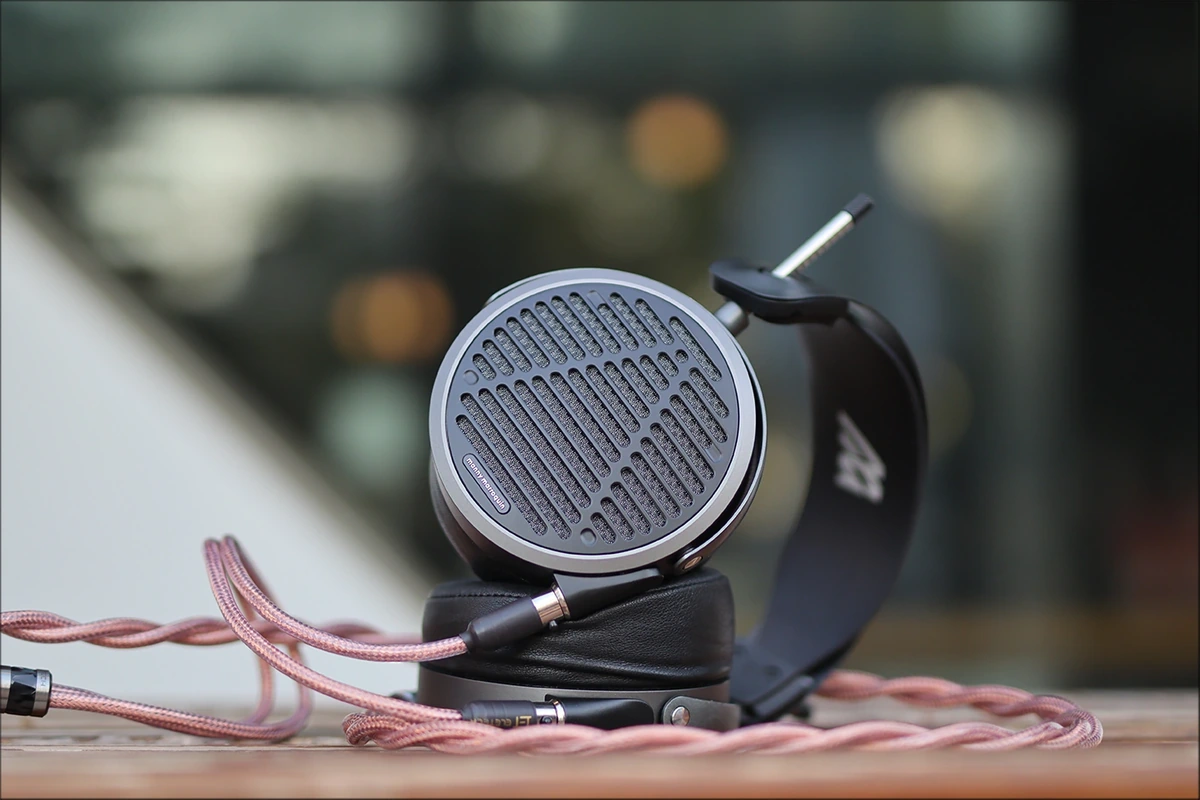
Introduction
Audeze is the top company when it comes to Planar Magnetic Headphones, and this is without a doubt. They are pioneers when it comes to designing planar magnetic drivers, and make everything in-house, with their technology having been the most popular for the longest time. Although many new companies are picking up the pace and releasing planar magnetic headphones products, Audeze has a special place for all music lovers, especially for those looking at the maximum quality planar magnetic drivers can get. The company nowadays is spread all over the world, having sellers and distributors spread far and wide, so you can typically listen to and purchase Audeze headphones locally, with local support. Audeze is from California USA, and they are in the top 3 companies worldwide when it comes to offering warranty and being helpful with their customers, but they are available on Amazon as well, if you prefer Amazon’s delivery methods.
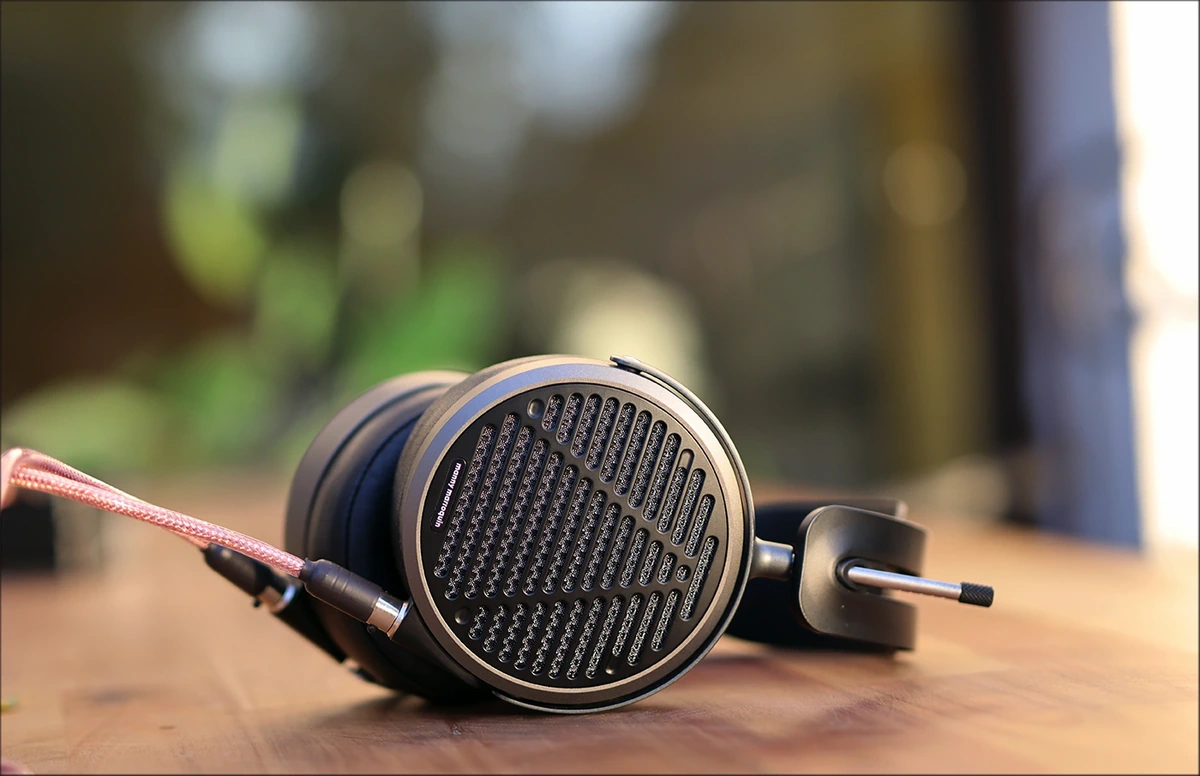
It should be noted that I have absolutely no affiliation with Audeze, I am not receiving any incentive for this review or to sweeten things out. I’d like to thank Audeze for providing the sample for this review. Every opinion expressed is mine and I stand by it. The purpose of this review is to help those interested in Audeze MM-500 Planar Magnetic Headphones find their next music companion.
Product Link
You can grab one from www.amazon.com here: https://amzn.to/3MB0bP3
If you’re in the UK, you can grab one from www.amazon.co.uk here: https://amzn.to/3TaoplR
And if you’re from Europe, you can grab one from www.amazon.de here: https://amzn.to/3T3auOD
Build Quality/Aesthetics/Fit/Comfort
A huge part of the Audeze MM-500 design is centered on the design and sound that’s been tuned by Manny Marroquin, 11-time Grammy Winner, and from the moment I heard those headphones, a personality I should follow as well. As you may know, I like to try to edit music, do mixing and mastering and even play the guitar, but I’m not as versed as I’m in writing, programming and reviewing, so it is interesting to see that an actual sound engineer can fine tune a headphone that’s not even half the price of the current flagship of a company to sound almost as detailed, revealing and clear as that said flagship, in our case LCD-5.
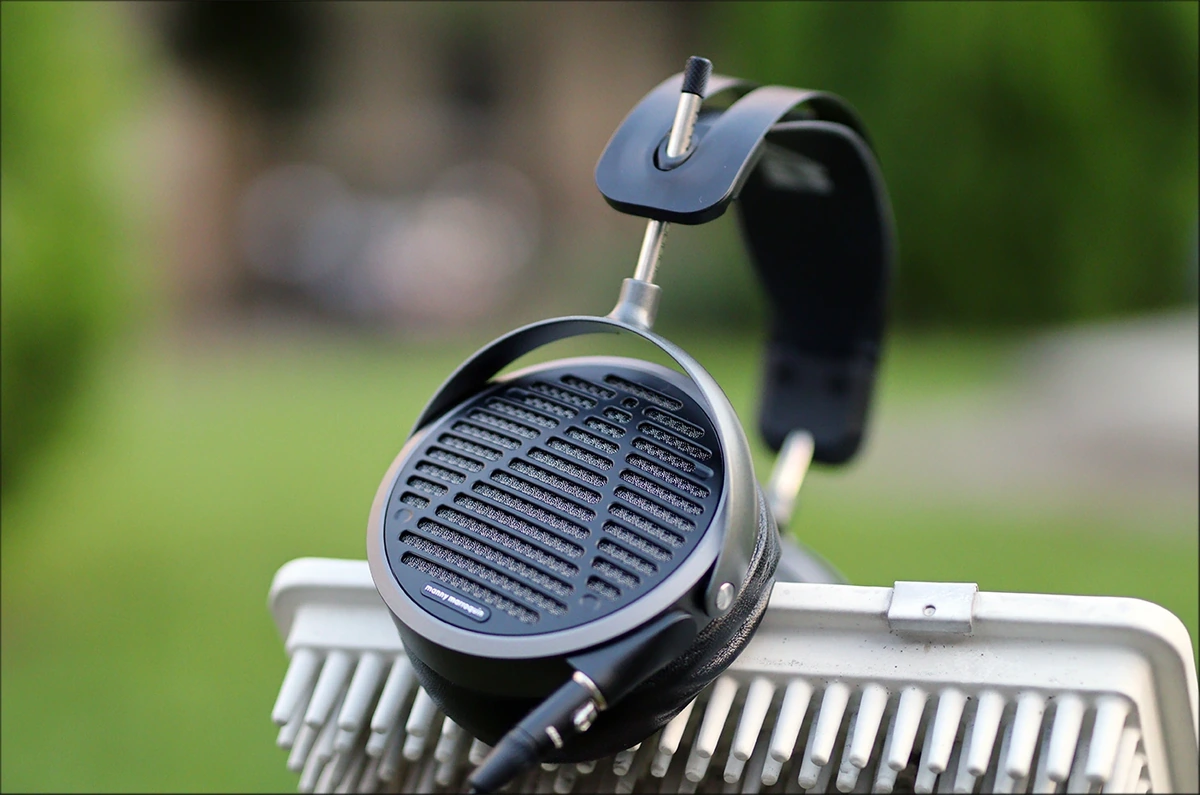
But let’s first explore what Audeze MM-500 is. It is a planar magnetic headphone designed to be lighter than the famous LCD-X, but to look sleeker and to also be sturdier. It is clear from the start that Audeze built MM-500 with a purpose, it is made to deliver the best mixing and mastering experience, and to deliver the best results when you’re working with music. In fact, MM-500 was used to mix Kentrick Lamar #1 Album, “Mr. Morale & The Big Steppers” signed at Larrabee Studios.
Although this isn’t exactly evident from the website, I hope it will be evident from my reviews, but MM-500 has a really complex color. They look gray when blue light is shined on them, they look brown when warm light is shining on them, and they look green under cold light. It is a really interesting headphone aesthetically, but as I write this review, they have a strong, neutral gray color, while on Audeze’s website they look brown, and my girlfriend said they look green to her eyes, during a video we made about the best headphones out there.
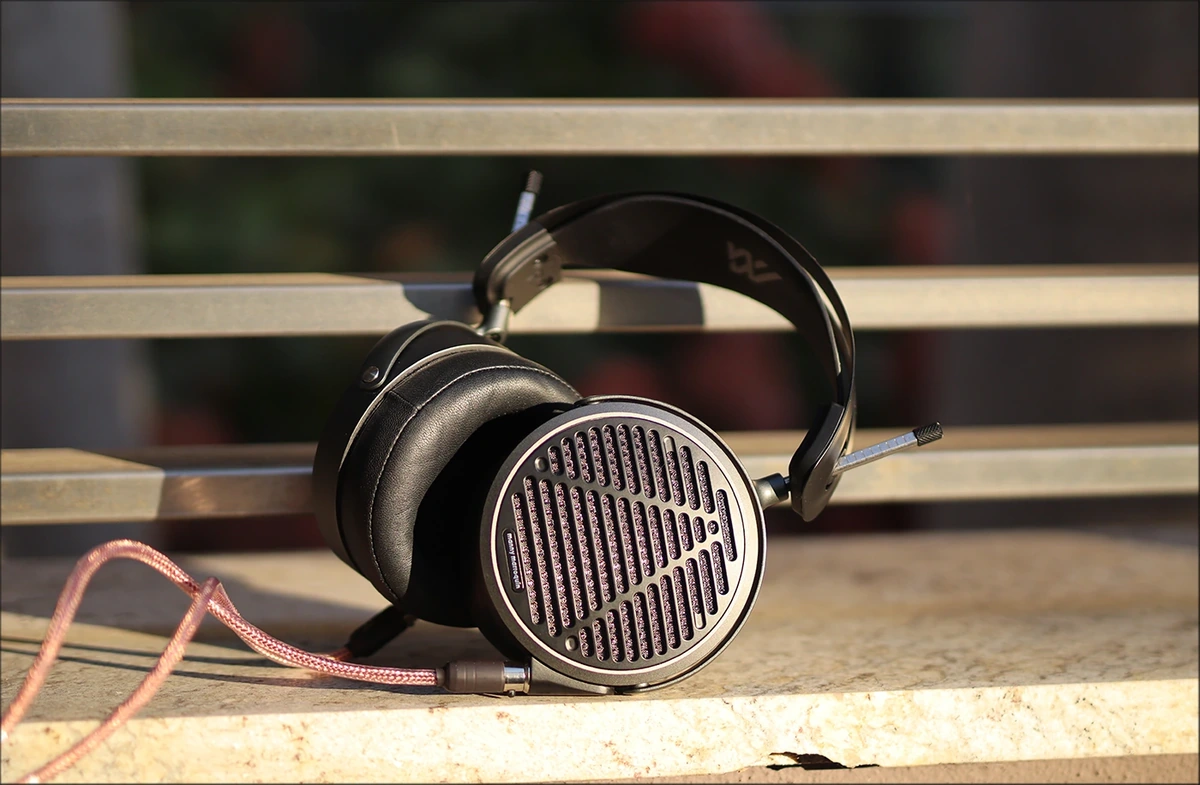
MM-500 is designed to replace all your other audio equipment, stereo monitors, IEMs, and everything in between. They work well for late night listening, on-the-go reference for your ears, and they are a world-class studio monitoring headphone, as we’ll explore down below in the Sound Quality part of the review. Audeze even designed a smaller transport case so you can have this reference anywhere you go, and MM-500 has smaller earcups, and a tighter fit with less distractions than other Audeze headphones.
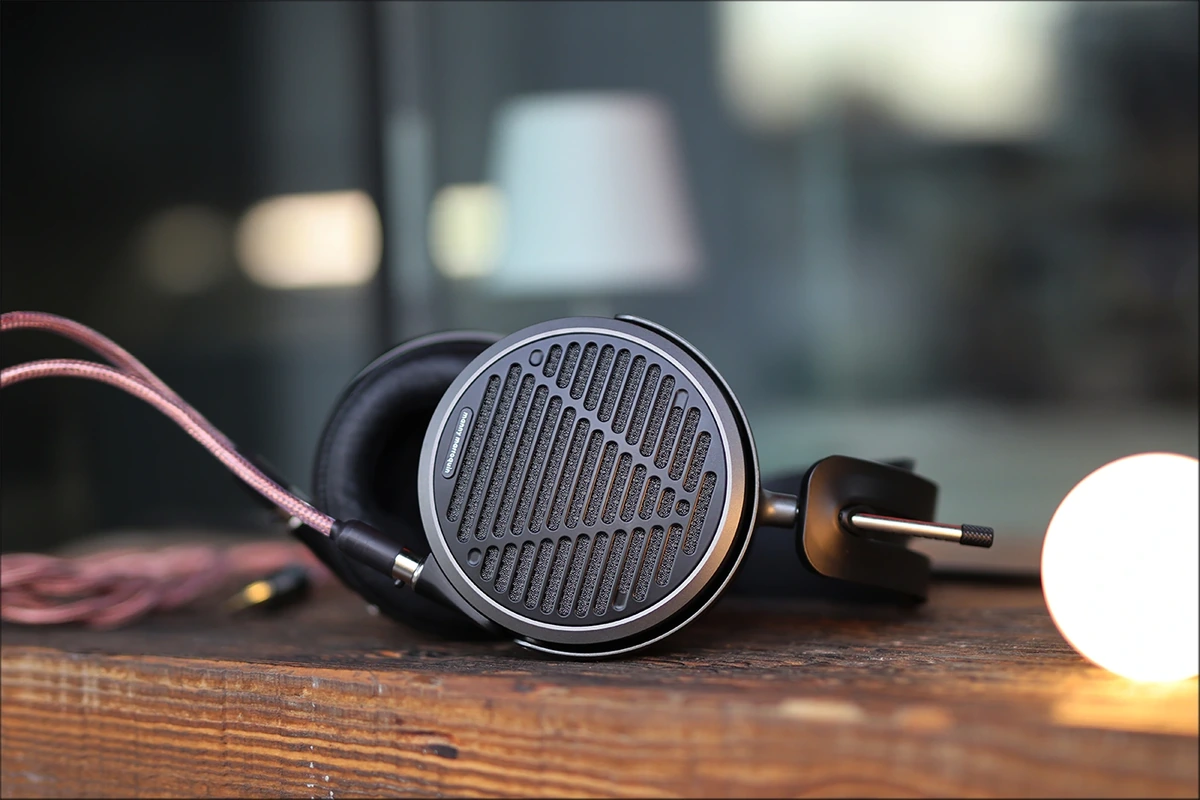
The technical data includes one of the largest transducers in existence, 90mm in size, with a maximum SPL of higher than 130 dB. The frequency response goes from 5Hz to 50kHz, and a sensitivity of 100dB / 1mW confirms that you shouldn’t have any problems driving MM-500 from a portable source. Audeze takes advantage of their Ultra-Thin Uniforce Diaphragm, with an N50 Neodyum magnet to power MM-500. Those come with Fazor Phase magnets, and with a Fluxor magnet array structure for best results. The surprising parts are the super low impedance of 18 ohms, and the super low minimum recommended power of just 100 mW, and baseline recommended power of 250mW which makes mm-500 drivable out of basically most portable sources such as Tempotec V6, Dethonray SG1 Pegasus, Shanling UA3, iBasso DX170, and SMSL C200. Audeze made sure that you won’t burn your MM-500 if you plug them in a strong amplifier, and they can handle up to 5W RMS.
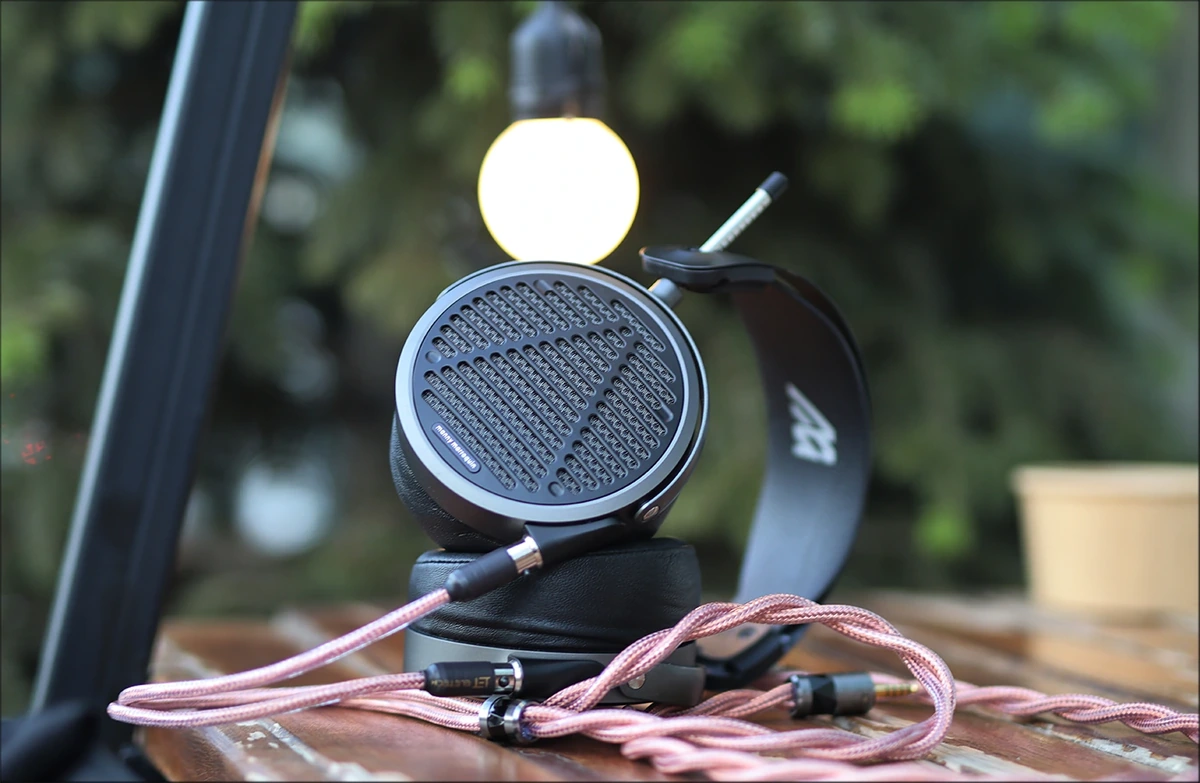
At a subjective level, MM-500 is a fun headphone to use, fairly portable, and which offers some degree of isolation from the outside noise. They are rather heavy, but the weight is distributed evenly. The clamping force is quite high, to keep them stable on your head, and to offer the most similar experience from listen to listen (they’re a music production tool after all, they need to produce a reliable experience every time). They can be heavy to wear, and although I found that an aftermarket like Eletech Inferno helps a lot with the sound, I like it more than the default cable, as it is balanced, it adds to the weight, making an already heavy headphone, even heavier. You should also keep in mind that subjectively, they are the easiest to drive pair of headphones I have, extremely sensitive to volume, but not sensitive to background noise or hissing.
Sound Quality
As always, we start with the source list, which includes a good number of high-end players, DAC/AMPs, and more, but for MM-500, you will barely need an interface, and they’re not sensitive to source at all, so between using an iBasso DX320 and using HIFIMAN EF400, they stay surprisingly coherent and similar in tuning. They are always driven well from the source, never overdriven, Audeze did a great job at making MM-500 a headphone you won’t need to worry about. Since I work with music production, I want to mention that most studios are not well equipped for headphones, and most of the interfaces out there do not come with a 4.4mm balanced headphone output, or have a strong headphone amp, so MM-500 is the perfect headphone if you’ll need something driven out of Audient Evo 4 to sound almost as good as if it were driven out of Cyrus One Cast, or Audio-GD Master 19.
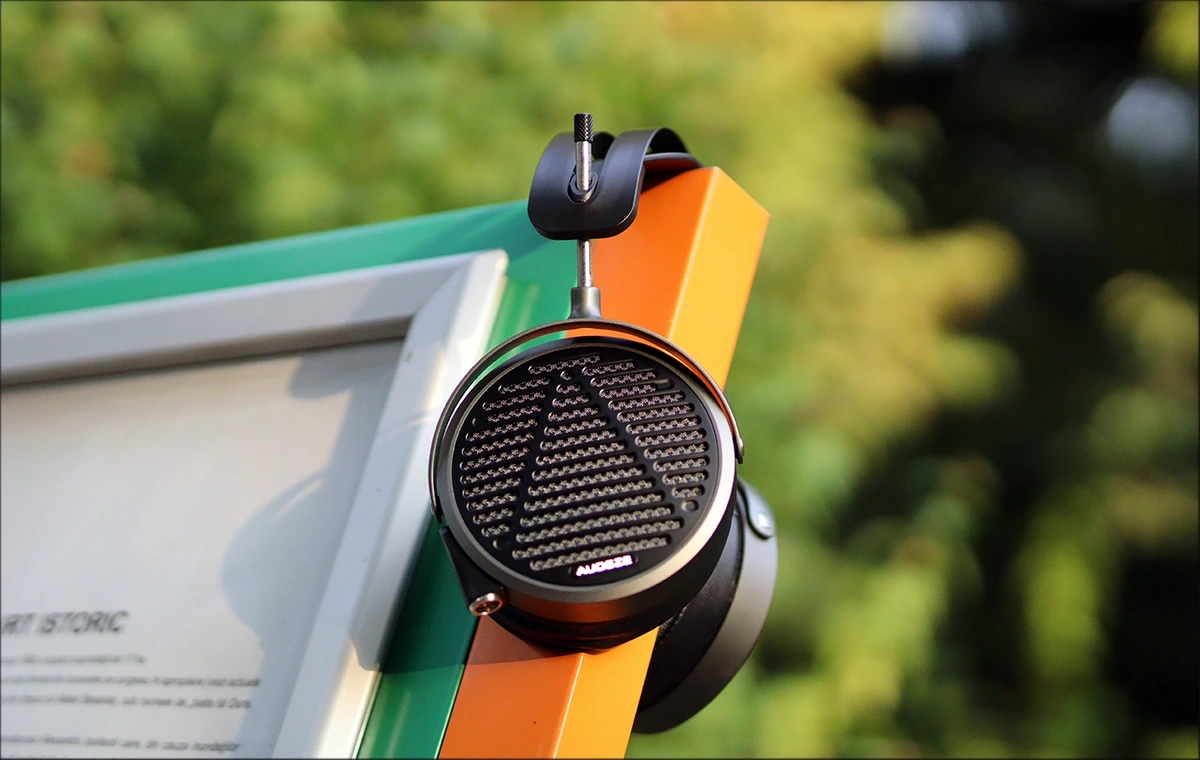
The only thing you need to worry about is the source music, as MM-500 is not a forgiving headphone, instead showing you everything as it is, as a microscope, being the most transparent headphone, you can find around its price point. This implies that the signature is neutral, following the Harman Curve neatly, and offering what I consider to be the most natural, most transparent sound I’ve heard so far from a headphone. The soundstage is very focused and natural in size, and they don’t add anything to the song, songs that are recorded and mastered to sound wide, will be enormous, while songs that are narrow and have that low dynamic range, wall of sound, keyhole presentation will sound as such. In fact, MM-500 shows huge differences between songs that are recorded, mixed and mastered well, and songs that had poor processing done, so you’ll always notice new details, thanks to how well MM-500 reveals micro and macro information from your music.
Starting with the bass, we have a really neutral but apt base that’s quick and plays with the song rather than color it. This is a surprise, because most planar magnetic headphones tend to have a character to the bass that they apply to every song played through them, but MM-500 just shows how the bass actually is in the song that’s being played. They can go as low as actual 20Hz, and you can both hear and feel the bass if the song is designed to play that kind of bass, but for bright and songs that have some bass roll-off, MM-500 will just show that instead of adding substance and weight where it wasn’t present to begin with. I’d call this precision and dead-on perfect neutrality. Songs like Delta Heavy – Demons, which has a pretty ideal mastering, despite having a rather low dynamic range, will show a large, hefty and impactful bass. You’ll need to pump the volume quite hard to make MM-500 massage your head, but even with low volumes, you will hear the bass, down to 20 Hz, with all the nuance and fluctuation it has.
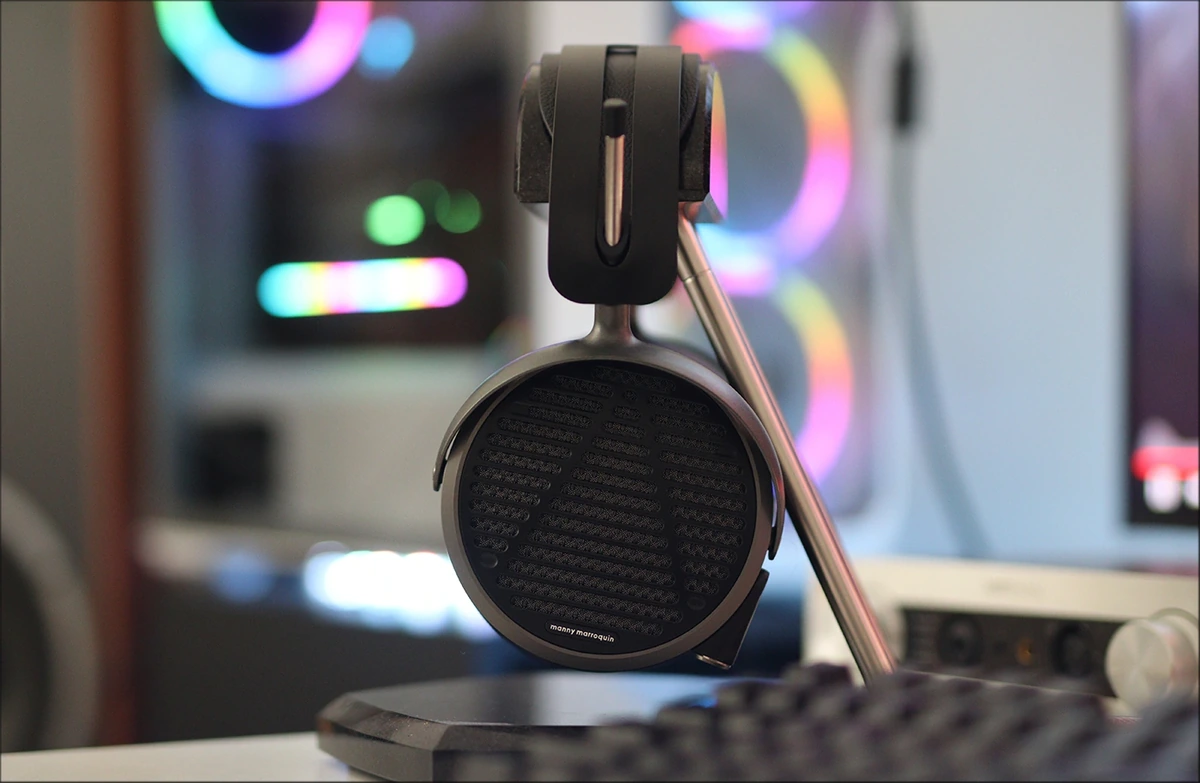
The midrange of MM-500 is where the true magic happens though, especially if you’re working with complex songs, multiple layers of guitars and violins, and need good separation between the background and foreground vocals, as MM-500 nails everything perfectly. As my girlfriend pointed out in a video we made about headphones, a headphone with a natural soundstage like MM-500 is better for most music, since you don’t have a scattered presentation for any instruments, and you get exactly the same sound you’d get by being there in the studio, down to the last micro detail present in the song. A really good experiment song for this is Alesana – The Thespian, as MM-500 is one of the very few headphones capable of properly playing both the lead clean voice, while having the lead guitar playing in the right ear, and the rhythm in the left ear, with the two entwining and changing places often, and offering a really clear presentation of a really busy song with multiple layers of instruments. The tonality is spot-on perfect, with perfect guitars, voices and piano tonalities, all of them having exactly the right amount of weight, texture and transparency. In fact, MM-500 shows easily what microphone was used, how it was placed relative to the source of the sound and offers a superb instrument placement / stereo imaging. The level of instrument separation they present is highly connected to the song / mixing / mastering it has, as songs designed to sound rather clean and well separated are presented as such, while pieces where instruments blend a bit and bleed into each other will show those mistakes easily. To give you a good example, Painted In Exile – Beneath The Waves has a somewhat scattered and mixed presentation of guitars over the rest of the instruments, being part of the first 3.14 EP played by the band, while if you listen to a song like Painted In Exile – The Bazaar, you will hear that they did a much better job at mixing and mastering the guitars, separating them much better from the background and offering more space and better definition for each instrument. The pianos playing in the background are also clear and have a depressive touch to each key press, and a weighty presentation, ideal for the song and how it was designed.
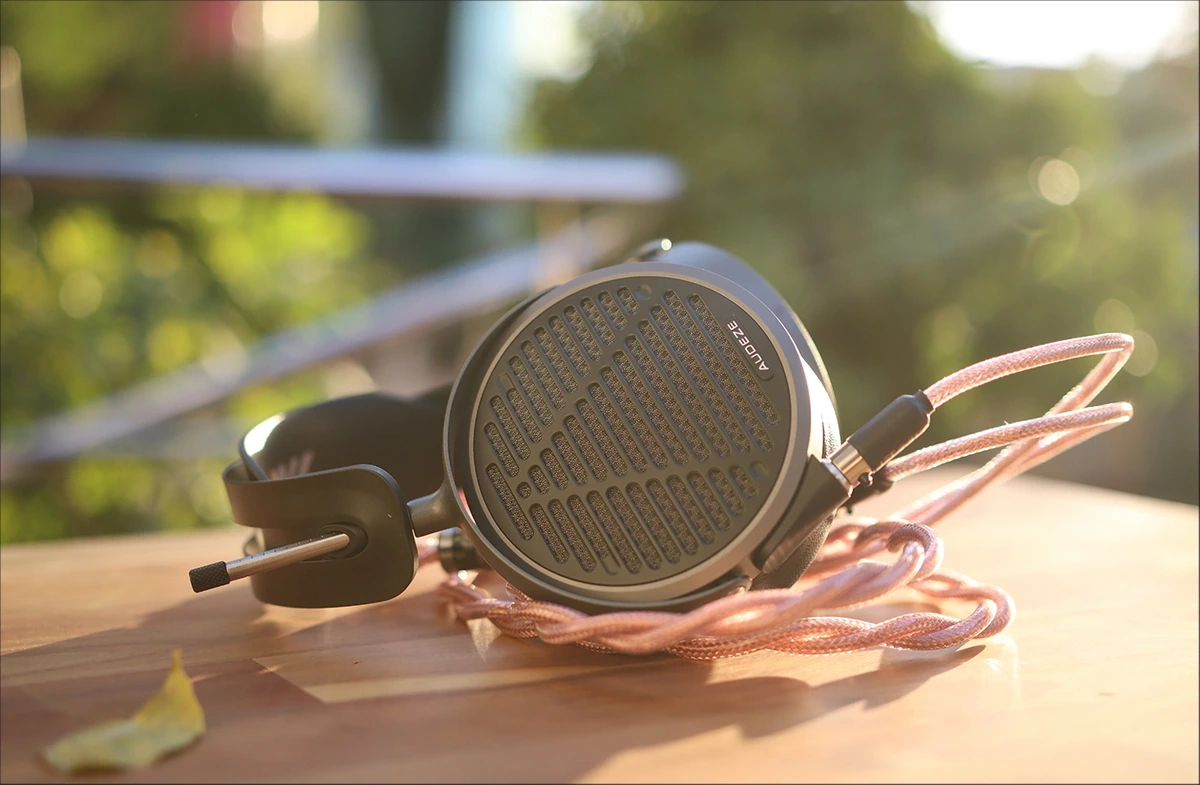
If you’d think that with all the Audeze headphones each having a certain coloration to them, MM-500 would present one too, you’d actually be quite wrong. The upper midrange, lower treble and upper treble ratios are perfectly balanced, following the dead neutrality they have, with no extra coloration, and happy tunes will sound happy, while sad tunes will be sad. MM-500 has a super well extended treble, up to 18-20 kHz audibly, but they don’t insist on the treble more than the song does, offering you a very transparent window into how the song is supposed and made to sound like. For example, on songs like Killitorous – No, Not The Bees, the treble and cymbal crashes are actually somewhat damped and presented with a certain roll-off, despite the whole song being presented brightly, as the band went for a very forward upper midrange in the mix, to emphasize on the crazy chromatics they go for with the lead guitars. On the other hand, MM-500 offers a really clean window to the party of cymbals from the likes of Infant Annihilator, where every cymbal crash can easily be heard, songs like Flayed And Consumed, you can hear every single bit of air you’d hear if Aaron Kicher was playing the drums right in front of you. All in all, Audeze MM-500 handles everything perfectly, regardless of whether we’re talking about heavy songs from metal bands, slow jazz from Jill Tracy, or EDM music, down the aggressive trancecore and downtempo. Everything is played perfectly, down to the smallest detail, and this is clearly a transparent and precise headphone that won’t add or take away anything from the music you’re hearing, giving you a perfectly neutral and transparent listening experience. From my experience with Audeze MM-500, I can say that I discovered so much music I love, and also discovered how much I can appreciate different artistic approaches to the mixing and mastering of an album, as well as the hard work of creating a live version that actually sounds good. If you’re looking for textures, MM-500 will present those perfectly, if you’re looking for layers, MM-500 doesn’t struggle, while if you’re looking for music, MM-500 will play music as it was recorded, mixed and mastered, staying perfectly transparent, acting like the best nearfield monitors you’d ever heard.
Studio / Mixing / Mastering Usage
As most audio engineers will tell you, near field monitors are the number one option when it comes to audio work because they remove the room from the equation, and they allow you to hear music as it is, with no distractions. The same can be said about MM-500, and while some aspects of them don’t appeal as much to audiophiles and listeners, they are key elements of a successful mixing / mastering headphone.
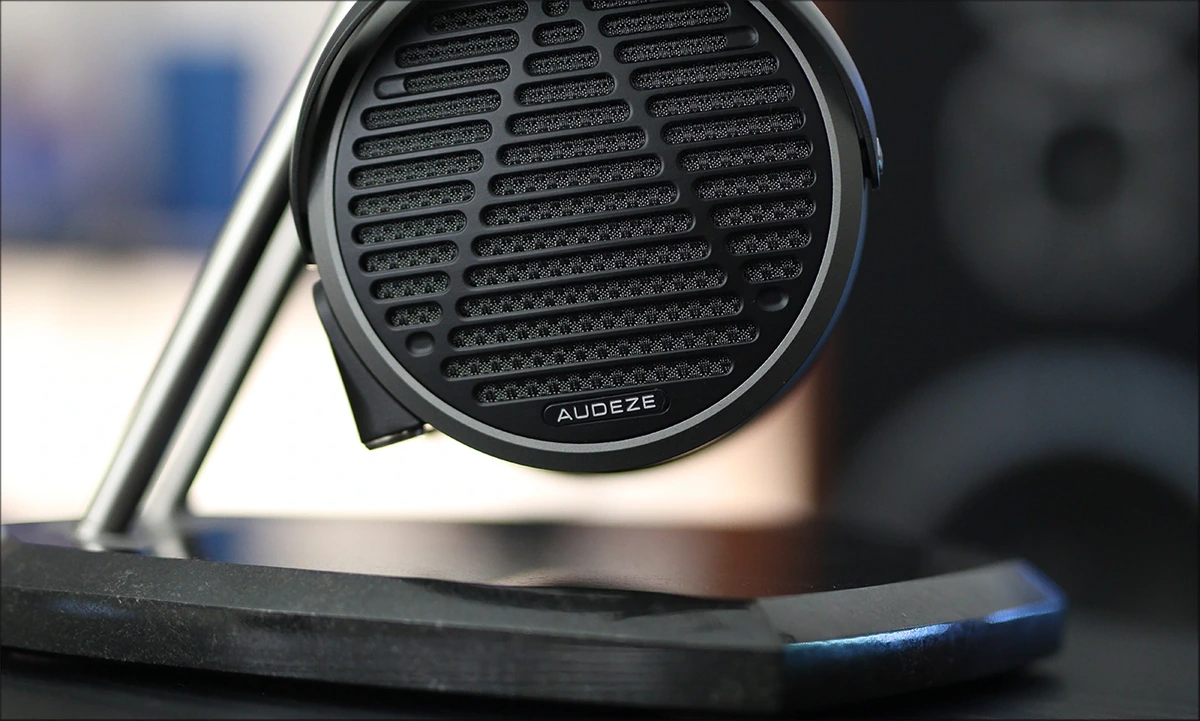
First off, they have a really natural soundstage, nothing too wide or eccentric, which is excellent for an engineer who needs to know precisely when the song starts being too wide and scattered, and when the song is too congested. Also, the instrument separation is quite a bit stronger than most headphones in the same price range reflect it to be, making MM-500 ideal for those who want to hear every layer and new instrument as it is added to the mix. The tight clamping force is to keep MM-500 stable on your head and to make sure they always fit exactly the same, so that the sound you’re getting in the mix doesn’t change because of the headphone, lowering how much you have to worry about them, and how much you have to just focus on the music and your work.
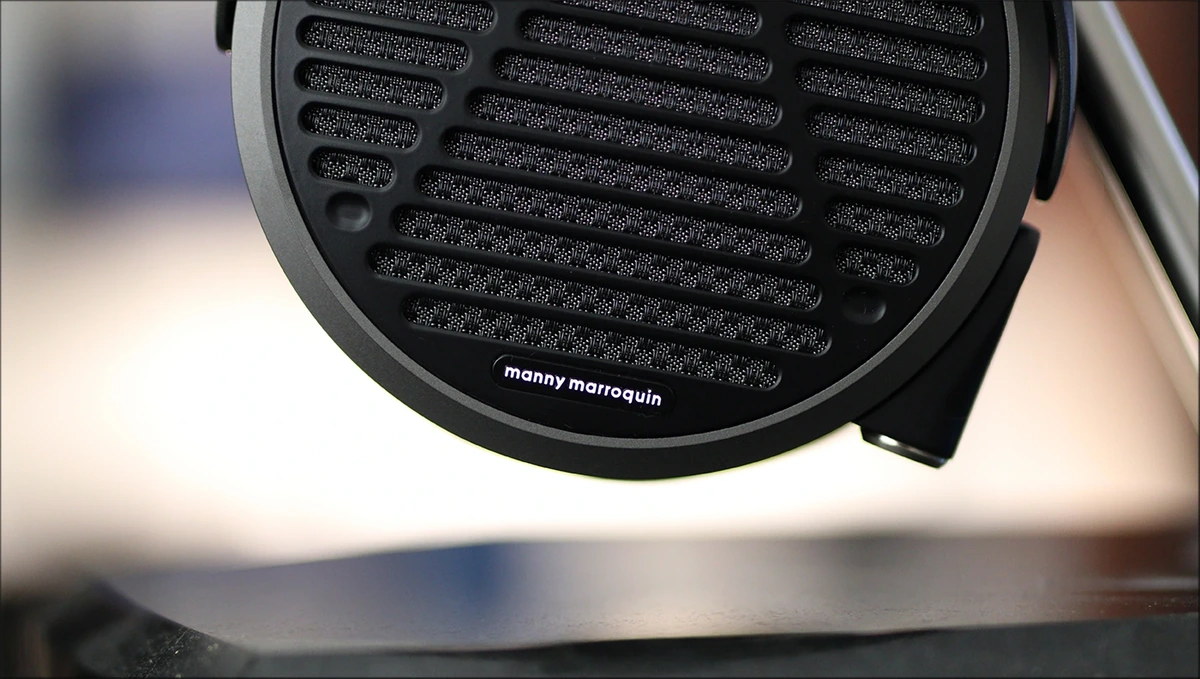
Audeze MM-500 is much easier to drive than your average Audeze headphone or most headphones, dynamic, planar or electrostatic. This is a design choice to make them compatible with all consoles, interfaces and instruments, being easy to drive even from my Boss Katana 50 MK2, as well as Audient Evo 4, giving MM-500 an edge for those who don’t have a powerful mixing / mastering interface. I know this to be true because the largest two studios in Romania asked me to give them my pair of Audeze LCD-MX4 to experiment with, and while one purchased a pair, the other said that the equipment they have already doesn’t drive them properly and they’re not likely to want to change their current setup. With Audeze MM-500, you don’t have to worry, even my Xiaomi Black Shark 4 smartphone has about enough power to drive them.
The final part that really makes MM-500 magical for studio usage is the passive noise isolation. Traditionally, open-back headphones try to isolate you less from the outside noise, to create a more realistic acoustic and to emulate a listening room / space better. MM-500 does exactly the opposite and instead of opening up, they downsize to and offer a certain degree of passive noise isolation, to produce a sound that’s basically always the same. Although they leak the sound produced, they leak considerably less than a HIFIMAN HE1000 V2 driven at the same volume and are much less influenced by the listening space shape and size. Even more, they offer a much-needed isolation, so minor noises like a fan whirring, or electrical buzzing in the room should not be audible, as they even dampen the sound of me typing today’s review quite a bit.
Comparisons
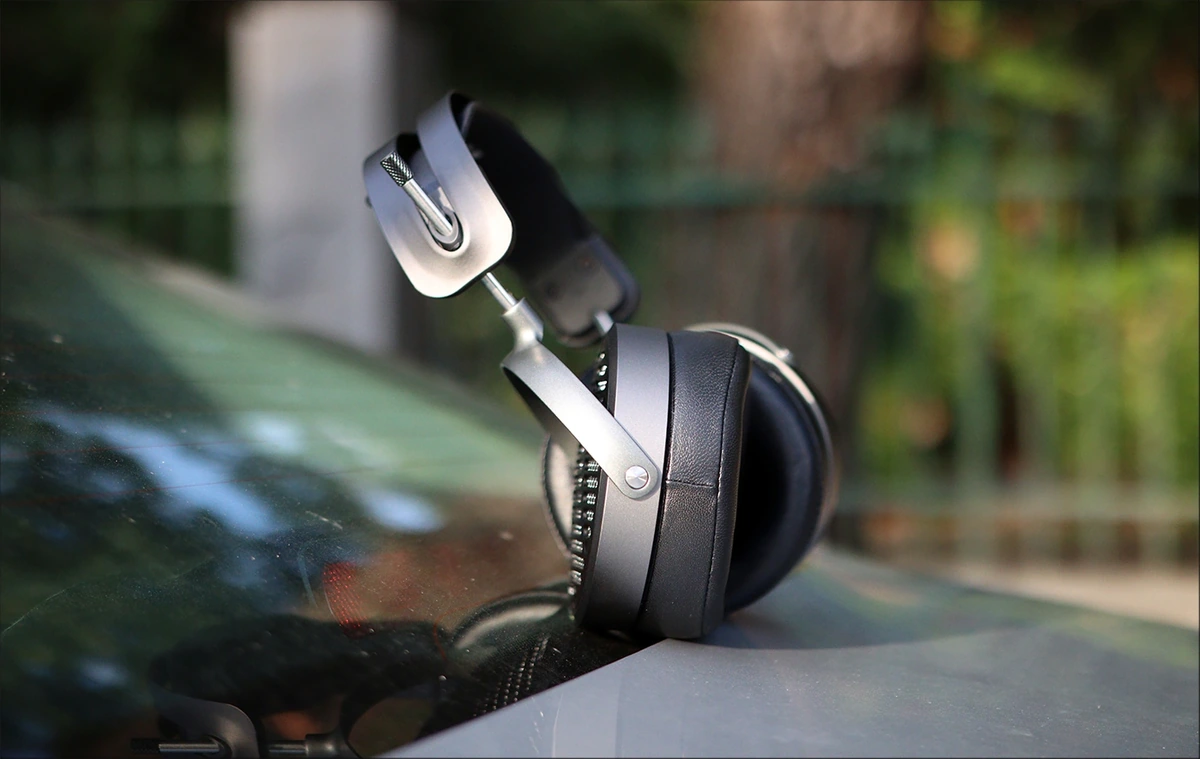
Audeze MM-500 vs HIFIMAN HE1000 V2 (1699 USD vs 3000 USD) – We start heavy, and I have to admit that HE1000 V2 has better aesthetics with the silver and brown accents, while MM-500 remains more stealthy. The comfort is quite different, with MM-500 being considerably heavier and tighter, with a stronger clamping force compared to HE1000 V2. The earpads of HE1000 V2 are considerably larger, but not much softer, while the lower weight helps a lot for long hours of usage. The default cables of HE1000 V2 are of lower quality than MM-500. The price is higher for HE1000 V2, even if you find them for 2000 USD, but they go for an entirely different presentation and experience. HE1000 V2 is more of an audiophile headphone that has a considerably wider, soundstage and more holographic sound, while MM-500 is more precise, has better instrument separation and better overall revealing ability. Indeed, I did so much back and forth between them that I know which is which from the first second hearing either, HE1000 V2 sounds warmer, has a more pleasing and musical midrange, less micro detail, but a smoother texture. HE1000 V2 is far less aggressive than MM-500, while MM-500 is more precise, more revealing, more analytical, makes understanding the song easier and has better sub-bass extension, although they both have similar bass impact. They both handle high volumes really well, but HE1000 V2 is much harder to drive, which adds to the cost of using it. I prefer going for HE1000 V2 if I’m in the mood to be impressed by stage, and don’t feel like hearing every little detail in my music, while MM-500 is perfect for when I’m really in the mood to pick a fight, to hear every detail, when I want to work on music, audio files, or when I simply need that precision to go with my listening. Go for MM-500 if you’re a detail addict, and go for HE1000 V2 if you price the soundstage width and holographic feeling more.
Audeze MM-500 vs Audeze LCD-XC (1699 USD vs 1800 USD) – We have two pretty heavy headphones, both being hefty, but the clamping force is higher on MM-500, and the weight is also slightly higher, while it is open back, while LCD-XC is a closed back headphone. The overall build quality is excellent as both are Audeze headphones, but I’d never imagine that the same company can make two headphones that sound so similar, yet so different. MM-500 is a dead-on, spot-on, perfectly neutral headphone with very little coloration in the sound, while LCD-XC is a much brighter headphone, with less bass quantity, despite both being designed for mixing and mastering. The detail level is similar, but MM-500 inherits a better micro detail and analytics, and indeed it sounds more like a flagship nearfield monitor, while LCD-XC sounds more like a revealing and high-end traditional stereo system. Certain micro details that can be aggressive are more evident on MM-500, which is able to bring all of those to the listener, while LCD-XC tends to hide those, and show different characteristics of the recording more, and being more sensitive to the tuning of the recording being too bright. Despite me calling MM-500 aggressive, both headphones are fairly fluid and easy to enjoy with music that has edgy textures and aggressive transients, while Audeze has their LCD-MX4 that’s really sensitive to transient quality and which will reveal if textures are too dry and congested. The soundstage of LCD-XC is wider, more airy and adds more depth, while MM-500 has better instrument separation and stereo imaging. LCD-XC is considerably harder to drive, so you better have a high quality source if you want to get the best of them.
Audeze MM-500 vs Crosszone CZ-1 (1699 USD vs 2000 USD) – The design is fairly professional for both headphones, but CZ-1 is closed back while MM-500 is open back in design. Both headphones are somewhat heavy, but MM-500 is heavier than Crosszone CZ-1, and CZ-1 has a much weaker clamping force, making them more comfortable compared to MM-500. The soundstage size is the first big difference between the two, as MM-500 has a considerably more focused sound, with better instrument separation and a better stereo imaging, while Crosszone CZ-1 has a really open and wide presentation, even compared to other open-back headphones, and despite being a closed-back headphone, Crosszone CZ-1 has one of the widest and most airy presentations I heard in my entire life. When we analyze both for detail and resolution, Audeze MM-500 is much clearer, has considerably more detail, better resolution and a more analytical sound than CZ-1. In fact, MM-500 can resolve certain details so well that I struggle to hear the same sounds with CZ-1 and most of the competitors, which is good to keep in mind, if you’re either a sound engineer or someone who dies for clarity / precision, Audeze MM-500 is uniquely prolific for the price point it is selling at. Crosszone CZ-1 is much harder to drive than MM-500, and requires a proper source to sound properly good, while MM-500 will sound good out of almost every source you may have.
Audeze MM-500 vs Spirit Torino Super Leggera (1699 USD vs 2000 USD) – Starting with the looks, Super Leggera is considerably more of a looker, while MM-500 is more of a stealthy and sleek headphone people won’t see coming. The comfort is better for Super Leggera, which is much lighter, and has less clamping force than MM-500. The only disadvantage of Super Leggera is that if you have larger ears, it can be borderline on-ear and not fully over-the-ear. I love the overall sound of both, but they couldn’t be farther apart from each other, and Super Leggera has a romantic, smooth and clean sound with very little technical edge, while MM-500 is a very technical, forward, aggressive, revealing and clear headphone that has the energy to deal blows with any music style, but the precision to make your mind go crazy when you hear all the instruments and information available in your music. It is easier to drive Audeze MM-500 from portables with lower power, while Super Leggera needs considerably more power and a better source to sound best. The soundstage is similar in size, but instrument separation and stereo imaging is better for Audeze MM-500.
Audeze MM-500 vs Rosson RAD-0 (1699 USD vs 2600 USD) – The aesthetic of Rosson RAD-0 surely is a bit trippier, as they come in more colors and designs. The weight is similar between MM-500 and RAD-0, but MM-500 is tighter on the head, and made to be more stable, to fully emulate a pair of high-end near-field monitors. I prefer the default cable of MM-500, which is of a higher quality than the one RAD-0 comes with. The sound is considerably thicker, warmer, smoother and leaner for RAD-0, which sounds recessed and lean. Audeze MM-500 sounds really neutral, clean and considerably more detailed, more resolute and more analytical compared to RAD-0. The difference in resolution is quite large, and if you love an analytical signature, MM-500 is the one to go, and even if you like bass, MM-500 has the quantity the song is intended to have, while RAD-0 is considerably stronger, bolder and more impactful. The drive factor is similar and both MM-500 and RAD-0 are fairly easy to drive and can easily be enjoyed out of a portable or professional sound interface. The soundstage is presented as wider and deeper by Audeze MM-500, by comparison, but still overall natural, while Rosson RAD-0 has a very intimate presentation.
Audeze MM-500 vs HIFIMAN HE6SE (1699 USD vs 1800 USD) – We have two very capable headphones in technicalities, but if we start with the build quality and comfort, both are made well, but MM-500 is quite a bit heavier, tighter on the head, and has a better default cable. HE6SE has a more plasticky build, and puts MM-500 to feel better built. The overall sound produced by both headphones is very analytical and capable technically, with MM-500 having a slightly better detail, better textures, and a deeper, more impactful bass than He6SE. On the other hand, He6SE has a brighter tuning, while MM-500 is more analytical in tuning. The overall soundstage is similar in size, while instrument separation is better on MM-500 as it can define each individual instrument better. The drive factor is fully in favor of MM-500, which is much easier to drive and can be used with basically any DAW or interface, while HE6SE can be incredibly hard to drive and requires more juice than you’re likely to have without spending at least once again its price, unless you go for HIFIMAN EF400, which has enough juice for both, and is priced 700 USD.
Value and Conclusion
At the end of the day, with a price much lower than the current flagships but a sound that can easily compete with them, Audeze is a company you ought to have in your heart, as MM-500 is probably the headphone with the best price / performance ratio from the high-end range, if you’re looking for an authoritative and neutral sounding headphone. In fact, the price / performance ratio of MM-500 is many times better than that of similarly priced headphones, and even than that of lower priced headphones like Sennheiser HD800S, Sennheiser HD660S, or Beyerdynamic Amiron, instantly plugging MM-500 to Audiophile-Heaven’s Hall Of Fame as one of the best headphones ever designed.
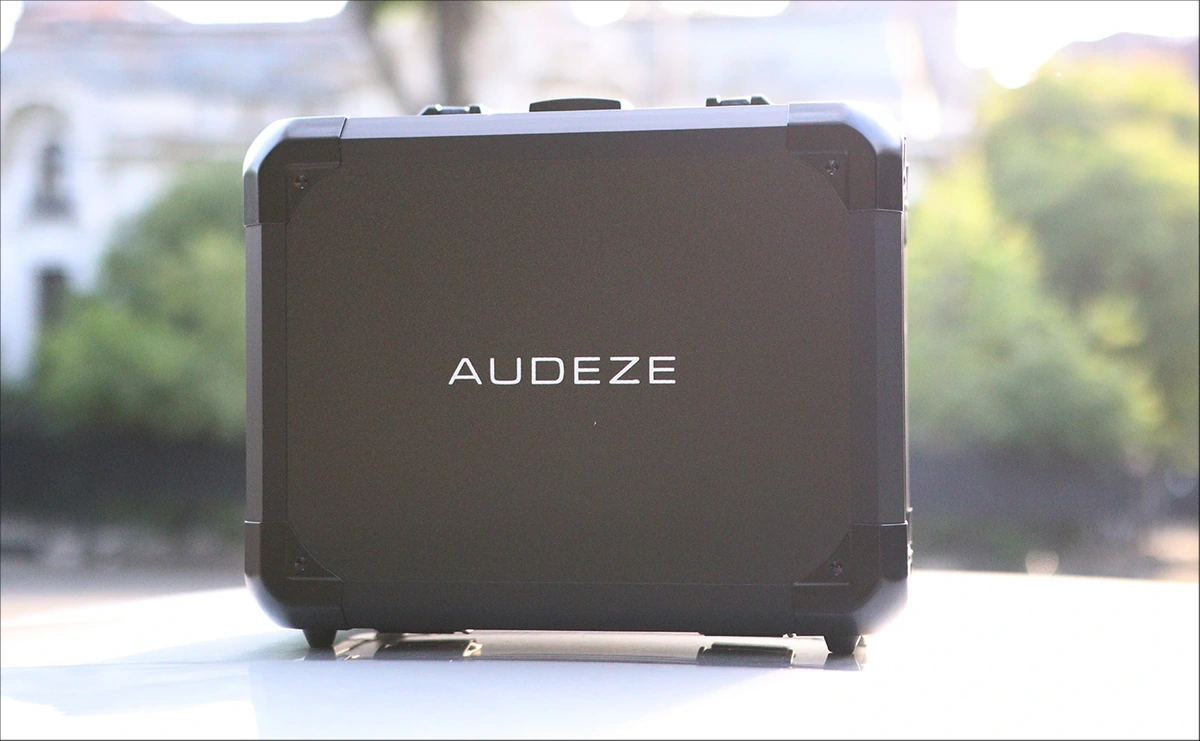
Even better, we have both the package, and the build quality for a high-end studio headphone with MM-500, as this pair planar magnetic headphones will be your best friend in both the studio and at home, while listening to music.
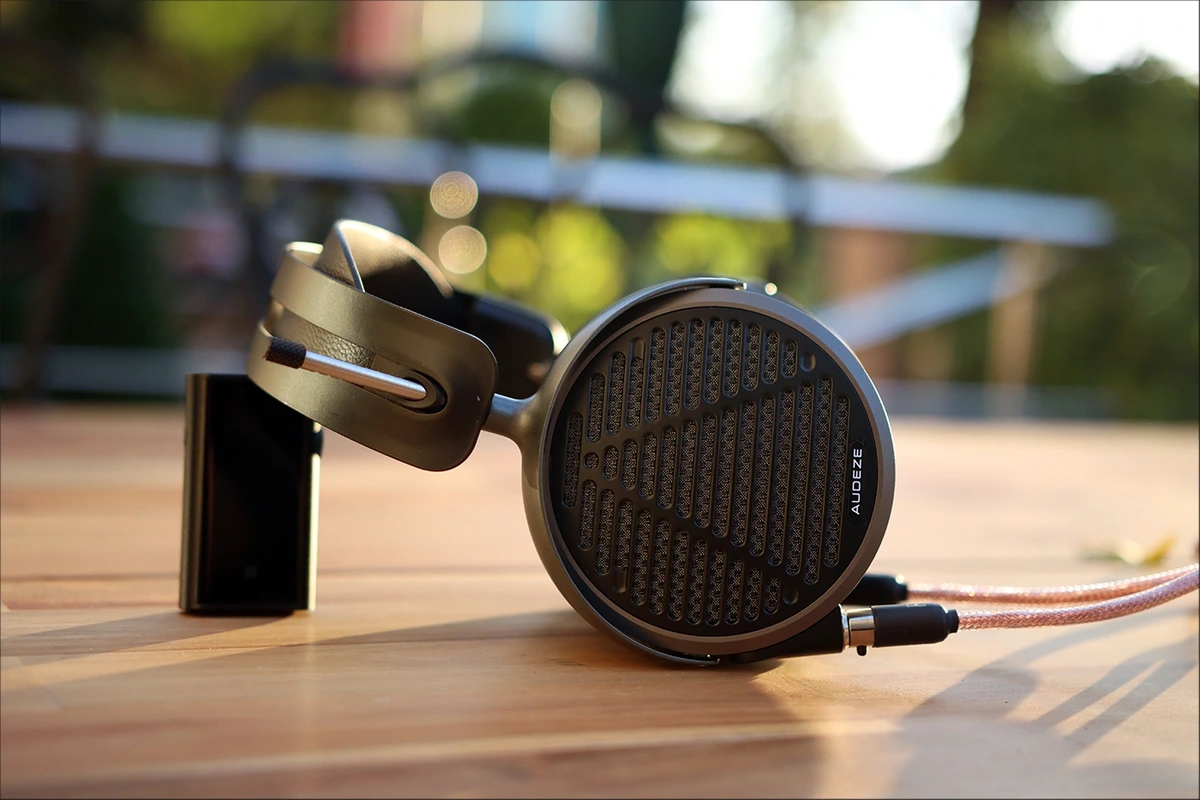
At the end of today’s review, it is really hard to close the review properly, Audeze MM-500 is a headphone that really broke the cycle and the market. They certainly went for a different signature compared to the typical Audeze house sound, and Manny Marroquin sparked some magic on MM-500. If you’re looking for a headphone that has the technical ability of a flagship, precision of a nearfield monitor, but also endless enjoyment, Audeze MM-500 will be your best choice, and a headphone I personally love a lot.
Product Link
You can grab one from www.amazon.com here: https://amzn.to/3MB0bP3
If you’re in the UK, you can grab one from www.amazon.co.uk here: https://amzn.to/3TaoplR
And if you’re from Europe, you can grab one from www.amazon.de here: https://amzn.to/3T3auOD
Technical Specifications
Style – Over-ear, open-back
Transducer type – Planar Magnetic
Magnetic structure – Fluxor™ magnet array
Phase management – Fazor™
Magnet type – Neodymium N50
Diaphragm type – Ultra-Thin Uniforce™
Transducer size – 90 mm
Maximum SPL – >130dB
Frequency response – 5Hz – 50kHz
THD – <0.1% @ 100 dB SPL, 1kHz
Sensitivity – 100 dB/1mW (at Drum Reference Point)
Impedance – 18 ohms
Max power handling – 5W RMS
Min recommended power – >100mW
Recommended power level – >250mW
Weight – 495g
Includes: MM-500 Headphone | Braided Cable | Standard Travel Case | Certificate of Authenticity and Warranty Cards
--- Please remember to stay safe, and always have fun while listening to music!---
- If you have a dime to spare, please donate, and help us! It would make the day brighter for me and my wife-
Full Playlist used for this review
We listened to more songs than those named in this playlist, but those are excellent for identifying a sonic signature. I recommend trying most of the songs from this playlist, especially if you’re searching for new music! The playlists are different for Spotify, Tidal and Youtube, and based on the songs I enjoy and are available on each!
https://www.youtube.com/playlist?list=PL_cjBXGmwSHSdGcwuc_bKbBDGHL4QvYBu
https://open.spotify.com/playlist/5J3oloz8Riy9LxEGenOjQ0?si=979ba4f082414be7
https://tidal.com/browse/playlist/330fd544-8e5b-4839-bd35-676b2edbb3d5
--- Contact Us ---






[…] 2018. Today we will be reviewing it and comparing it to the new HIFIMAN HE1000 Stealth (1400 USD), Audeze MM-500 (1699 USD), Crosszone CZ-8a (1700 USD), Sendy Audio Peacock (1500 USD), Spirit Torino Super Leggera […]
[…] but also compare them to other flagship headphones including HIFIMAN HE1000 Stealth (1400 USD), Audeze MM-500 (1699 USD), Crosszone CZ-8a (1700 USD), Sendy Audio Peacock (1500 USD), and Spirit Torino Audio […]
[…] and IEMs. For today’s testing I’ve been using SIVGA Oriole, TRN TA1 MAX, BQEYZ Topaz, Audeze MM-500, HIFIMAN Edition XS, and AIAIAI TMa-2 Studio. Overall, Dawn has enough driving power for all of […]